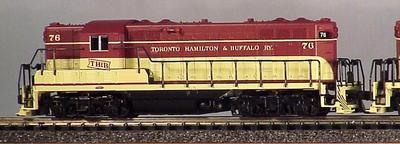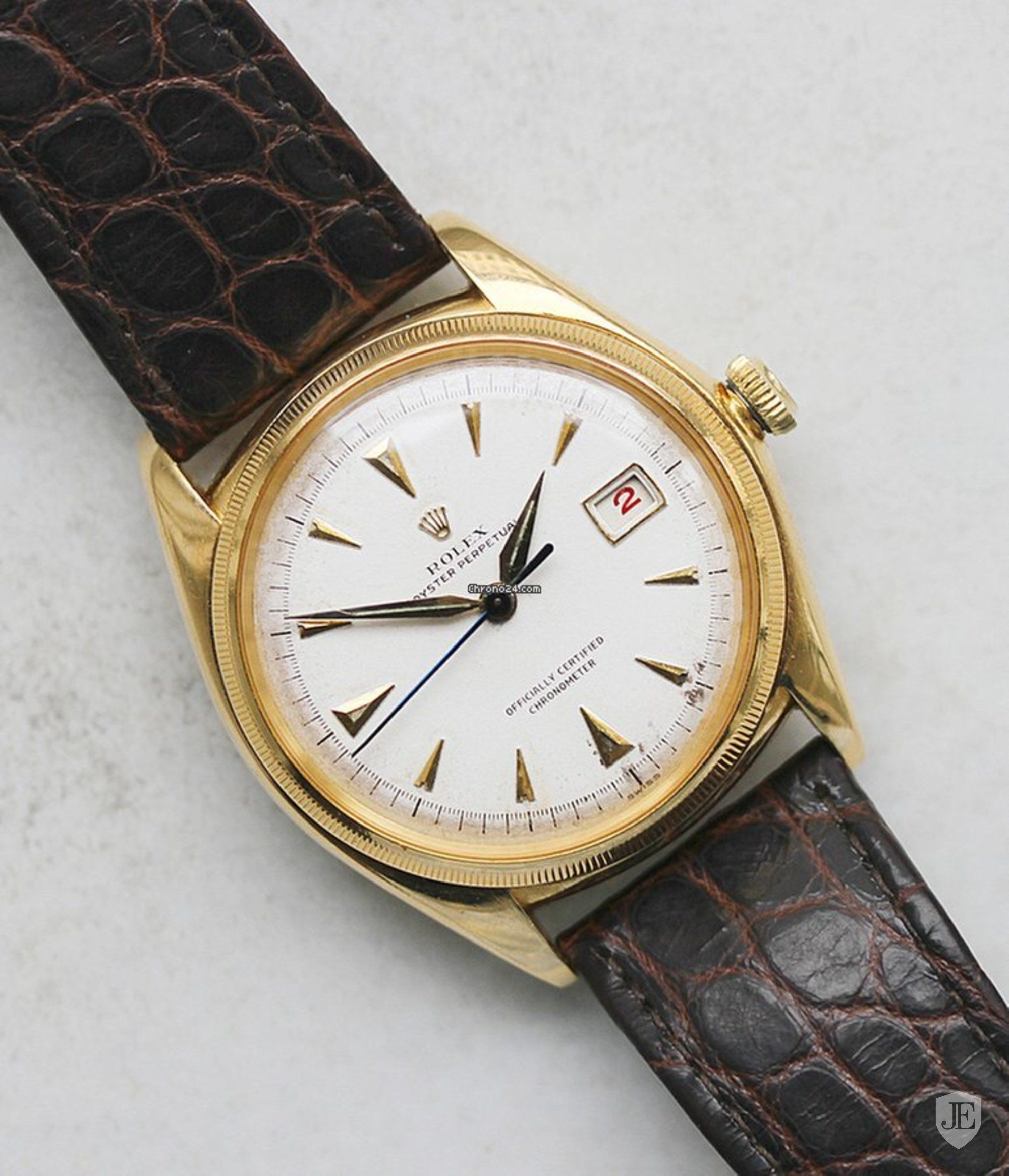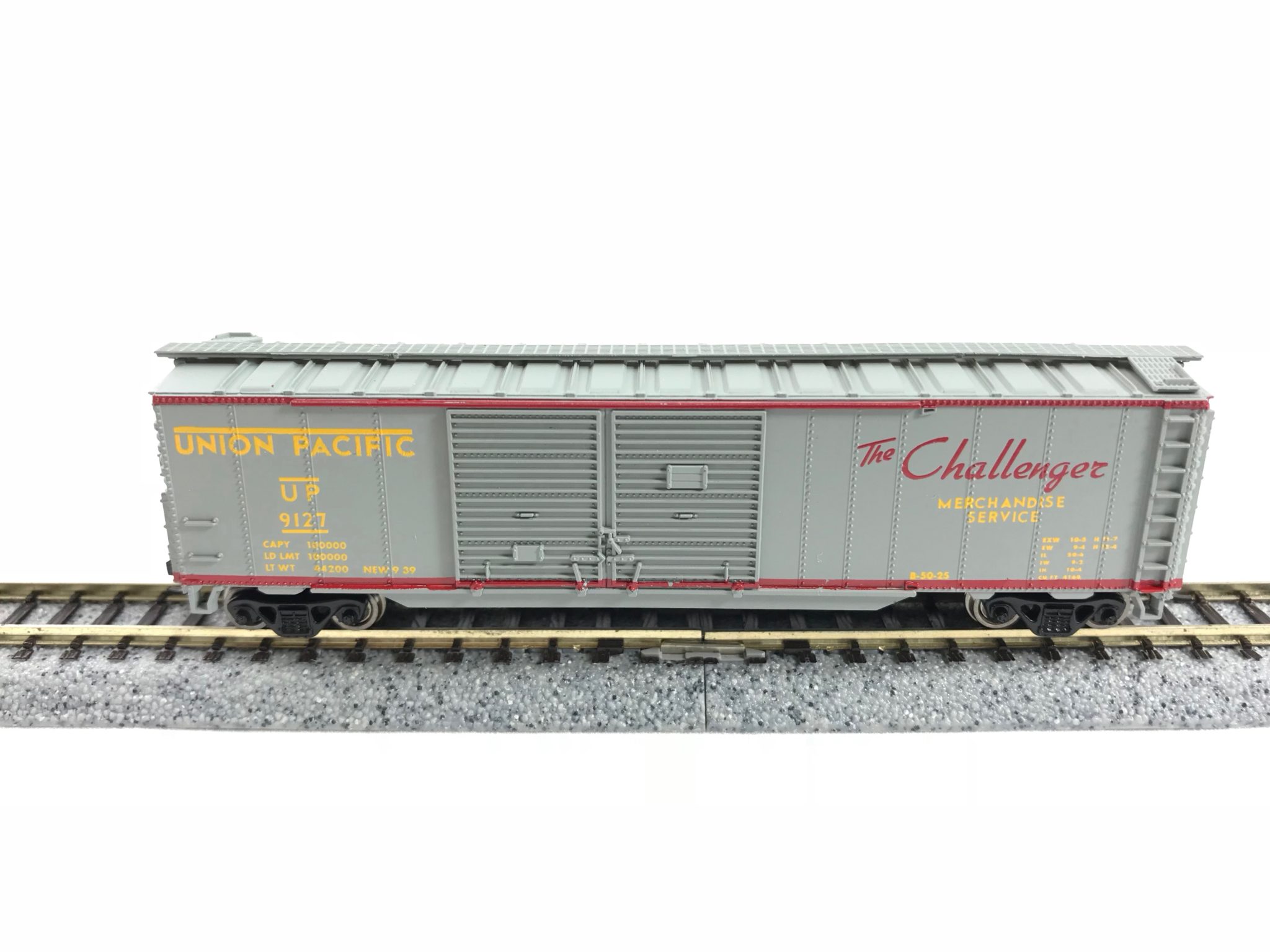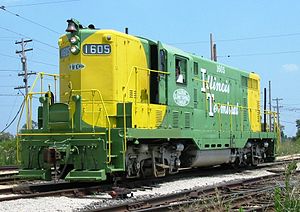Specific Item Information: Specific Canadian release
Model Information: The Atlas GP7, GP9 and GP9-TT models are some of their oldest models. The models share the same internal mechanisms and differ only in their shell details. Unlike many of their other older body styles, these bodies have been updated several times and are still a regular part of the Atlas production cycle.
The first release of this body type was in 1974 and the models were produced by Roco in Austria. Production for these models ended in 1982. The next release started in 1987 and the models were re-tooled by Kato in Japan for Atlas. The third version came out in 1995 and was made in China for Atlas and these engines were essentially a redo of the Kato mechanism. Finally, in 2006, a completely new mechanism was introduced and this 4th version is a split frame, dual-flywheel, slow-motor, modern engine. Furthermore, with the more recent releases, most road-names and numbers are available in both a DCC-Ready and a Decoder-Equipped version.
Assembly instructions from Atlas: GP7 (Japan version), GP7 Ph.1 (China version), GP7 Ph.2 (China version).
The first release of this body type was in 1974 and the models were produced by Roco in Austria. Production for these models ended in 1982. The next release started in 1987 and the models were re-tooled by Kato in Japan for Atlas. The third version came out in 1995 and was made in China for Atlas and these engines were essentially a redo of the Kato mechanism. Finally, in 2006, a completely new mechanism was introduced and this 4th version is a split frame, dual-flywheel, slow-motor, modern engine. Furthermore, with the more recent releases, most road-names and numbers are available in both a DCC-Ready and a Decoder-Equipped version.
Assembly instructions from Atlas: GP7 (Japan version), GP7 Ph.1 (China version), GP7 Ph.2 (China version).
DCC Information: The first version of this engine (Roco) gets a solid "No" for DCC capability, but this is no surprise as these were made in 1974. The next two releases (Kato and China) are split-frame, but also split-board. They may be DCC-Friendly, but likely it will be a fair amount of work to upgrade these. The most recent version (China, 2006+) is eminently DCC-Ready. Furthermore, most road-names and numbers produced since 2006 are available in both a DCC-Ready and a Decoder-Equipped version. Earlier DCC factory-equipped versions were fitted with Lenz LE063XF decoders, whereas most recent versions are fitted with NCE N12A2 decoders. The Atlas version of these decoders will respond to manufacturer's address "127" (CV8) i.e. "Atlas Model Railroad Products", though being identical to their original manufacturer's specification.
For non-DCC-ready versions, a wired DCC decoder installation for this model can be found on Brad Myers' N-scale DCC decoder installs blog.
Models produced since 2006 accept the following plug-in decoders:
- Digitrax DN163A4: 1.5 Amp N Scale Board Replacement Mobile Decoder for Atlas GP30 and other short Atlas diesel locomotives.
- Digitrax DN163A2: Retired decoder, replaced by DN163A4.
- NCE N12A2: Plug and play decoder for N-Scale Atlas Classic Series GP7, GP9, GP30, GP35.
- TCS ASD4 (Installation for GP7, Installation for GP9)
- MRC 1955: N-Scale Sound Decoder for Atlas GP-7, GP-9, GP-30 or GP-35
For non-DCC-ready versions, a wired DCC decoder installation for this model can be found on Brad Myers' N-scale DCC decoder installs blog.
Models produced since 2006 accept the following plug-in decoders:
- Digitrax DN163A4: 1.5 Amp N Scale Board Replacement Mobile Decoder for Atlas GP30 and other short Atlas diesel locomotives.
- Digitrax DN163A2: Retired decoder, replaced by DN163A4.
- NCE N12A2: Plug and play decoder for N-Scale Atlas Classic Series GP7, GP9, GP30, GP35.
- TCS ASD4 (Installation for GP7, Installation for GP9)
- MRC 1955: N-Scale Sound Decoder for Atlas GP-7, GP-9, GP-30 or GP-35
Prototype History: The EMD GP7 is a four-axle (B-B) road switcher diesel-electric locomotive built by General Motors Electro-Motive Division and General Motors Diesel between October 1949 and May 1954. Power was provided by an EMD 567B 16-cylinder engine which generated 1,500 horsepower (1,119 kW). The GP7 was offered both with and without control cabs, and those built without control cabs were called a GP7B. Five GP7B's were built between March and April 1953. The GP7 was the first EMD road locomotive to use a hood unit design instead of a car-body design. This proved to be more efficient than the car body design as the hood unit cost less to build, was cheaper and easier to maintain, and had much better front and rear visibility for switching.
Of the 2,734 GP7's built, 2,620 were for American railroads (including 5 GP7B units built for the Atchison, Topeka and Santa Fe Railway), 112 were built for Canadian railroads, and 2 were built for Mexican railroads. This was the first model in EMD's GP (General Purpose) series of locomotives. Concurrently, EMD offered a six-axle (C-C) SD (Special Duty) locomotive, the SD7.
From Wikipedia
Of the 2,734 GP7's built, 2,620 were for American railroads (including 5 GP7B units built for the Atchison, Topeka and Santa Fe Railway), 112 were built for Canadian railroads, and 2 were built for Mexican railroads. This was the first model in EMD's GP (General Purpose) series of locomotives. Concurrently, EMD offered a six-axle (C-C) SD (Special Duty) locomotive, the SD7.
From Wikipedia
Road Name History: The TH&B was chartered in 1884 to connect Hamilton, Ontario to Fort Erie, just across the border from Buffalo, New York. However, once construction commenced, the goals changed. Ultimately, the TH&B would run from Waterford east to Hamilton and Welland, Ontario. Two branches ran south from this line to reach the lake port cities of Port Cleburn and Port Maitland (both on Lake Erie.) Until 1932, TH&B ran a car ferry operation between Port Maitland and Ashtabula, Ohio. In total, the TH&B was 111 miles long, making it slightly shorter that Richmond Fredricksburg & Potomac. In 1895 ownership was split between Canadian Pacific and three of the New York Central Lines: Michigan Central, Canada Southern and New York Central. TH&B was an important carrier for heavy industries in the Hamilton, Ontario area.
The most modern steam power on the TH&B was a pair of 2-8-4 Berkshires (the only Berkshires on a Canadian railroad) and a pair of 4-6-4 Hudsons. Strangely, none of TH&B’s steamers were equipped with all-weather cabs which were so common in Canada. This may have been due to the influence of NYC’s mechanical department.
TH&B had completely dieselized by 1954: NW2: 4, SW9: 4, GP7: 7, GP9: 3. The three GP9’s were built with boilers for passenger service and with their air tanks mounted on the roof. The GP9’s were also built to run long-hood-forward unlike the GP7’s. This often led to consists that appeared to have the locomotives “elephant walking” when in fact they were running back to back. One of the GP7’s was destroyed in a wreck in 1980. The roster then remained the same until the end. They also never really changed their paint scheme (except for adding the logo to the cab side around 1970.)
New York Central’s share of TH&B passed to Penn Central in that merger. After the collapse of PC and the creation of Conrail, CP Rail picked up PC’s share of the TH&B in 1977. However, TH&B remained a separate railroad for another 10 years until being merged into CPR.
The most modern steam power on the TH&B was a pair of 2-8-4 Berkshires (the only Berkshires on a Canadian railroad) and a pair of 4-6-4 Hudsons. Strangely, none of TH&B’s steamers were equipped with all-weather cabs which were so common in Canada. This may have been due to the influence of NYC’s mechanical department.
TH&B had completely dieselized by 1954: NW2: 4, SW9: 4, GP7: 7, GP9: 3. The three GP9’s were built with boilers for passenger service and with their air tanks mounted on the roof. The GP9’s were also built to run long-hood-forward unlike the GP7’s. This often led to consists that appeared to have the locomotives “elephant walking” when in fact they were running back to back. One of the GP7’s was destroyed in a wreck in 1980. The roster then remained the same until the end. They also never really changed their paint scheme (except for adding the logo to the cab side around 1970.)
New York Central’s share of TH&B passed to Penn Central in that merger. After the collapse of PC and the creation of Conrail, CP Rail picked up PC’s share of the TH&B in 1977. However, TH&B remained a separate railroad for another 10 years until being merged into CPR.
Brand/Importer Information: In 1924 Stephan Schaffan, Sr. founded the Atlas Tool Company in Newark, New Jersey. In 1933 his son, Stephan Schaffan, Jr., came to work for his father at the age of sixteen. Steve Jr. built model airplanes as a hobby and frequented a local hobby shop. Being an enterprising young man, he would often ask the owner if there was anything he could do to earn some extra spending money. Tired of listening to his requests, the hobby-store owner threw some model railroad track parts his way and said, "Here, see if you can improve on this".
In those days, railroad modelers had to assemble and build everything from scratch. Steve Jr. created a "switch kit" which sold so well, that the entire family worked on them in the basement at night, while doing business as usual in the machine shop during the day.
Subsequently, Steve Jr. engineered the stapling of rail to fiber track, along with inventing the first practical rail joiner and pre-assembled turnouts and flexible track. All of these products, and more, helped to popularize model railroading and assisted in the creation of a mass-market hobby. The budding entrepreneur quickly outgrew the limitations of a basement and small garage operation. Realizing they could actually make a living selling track and related products, Steve and his father had the first factory built in Hillside, New Jersey at 413 Florence Avenue in 1947. On September 30, 1949, the Atlas Tool Company was officially incorporated as a New Jersey company.
In 1985, Steve was honored posthumously for his inventions by the Model Railroad Industry Association and was inducted into the Model Railroad Industry Hall of Fame in Baltimore, Maryland. In addition, Steve was nominated and entered into the National Model Railroad Association Pioneers of Model Railroading in 1995.
In the early 1990s, the Atlas Tool Company changed its name to Atlas Model Railroad Company, Inc.
In those days, railroad modelers had to assemble and build everything from scratch. Steve Jr. created a "switch kit" which sold so well, that the entire family worked on them in the basement at night, while doing business as usual in the machine shop during the day.
Subsequently, Steve Jr. engineered the stapling of rail to fiber track, along with inventing the first practical rail joiner and pre-assembled turnouts and flexible track. All of these products, and more, helped to popularize model railroading and assisted in the creation of a mass-market hobby. The budding entrepreneur quickly outgrew the limitations of a basement and small garage operation. Realizing they could actually make a living selling track and related products, Steve and his father had the first factory built in Hillside, New Jersey at 413 Florence Avenue in 1947. On September 30, 1949, the Atlas Tool Company was officially incorporated as a New Jersey company.
In 1985, Steve was honored posthumously for his inventions by the Model Railroad Industry Association and was inducted into the Model Railroad Industry Hall of Fame in Baltimore, Maryland. In addition, Steve was nominated and entered into the National Model Railroad Association Pioneers of Model Railroading in 1995.
In the early 1990s, the Atlas Tool Company changed its name to Atlas Model Railroad Company, Inc.
Item created by: CNW400 on 2023-01-09 09:24:36. Last edited by Alain LM on 2023-01-10 10:49:52
If you see errors or missing data in this entry, please feel free to log in and edit it. Anyone with a Gmail account can log in instantly.
If you see errors or missing data in this entry, please feel free to log in and edit it. Anyone with a Gmail account can log in instantly.











